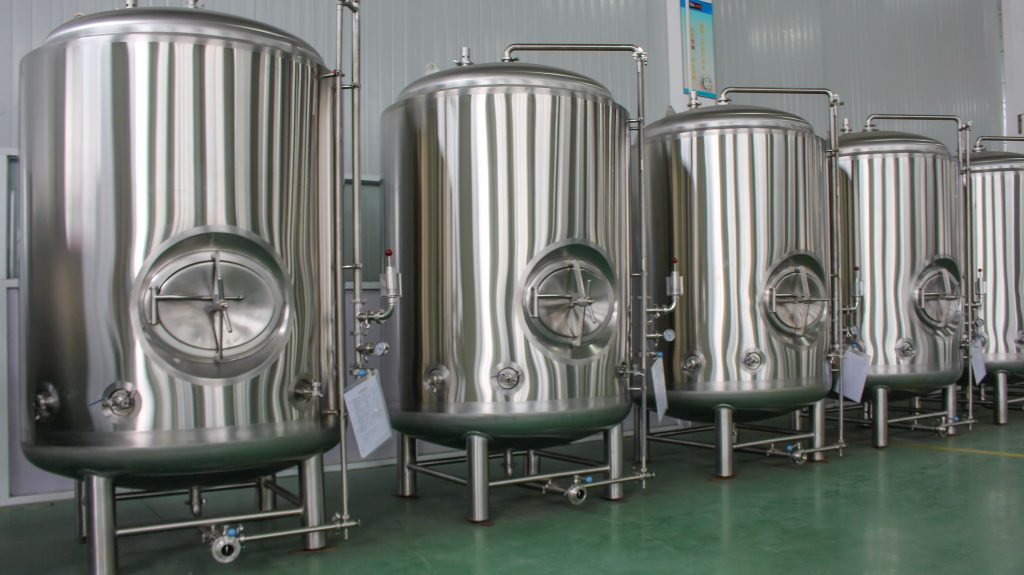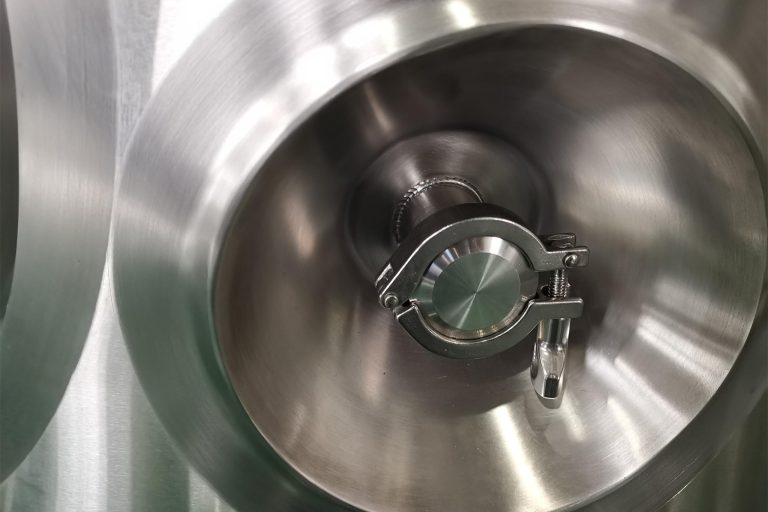Введение

The bright beer tank, a pivotal component in the brewing process, serves as the final destination for beer before packaging. It is within this vessel that beer undergoes carbonation, clarification, and conditioning, ultimately determining the finished product’s quality and flavor. To optimize the efficiency of your bright beer tank and ensure a consistently exceptional brew, several key factors must be carefully considered.
This blog post will delve into the various aspects of bright beer tank operation, providing actionable tips and insights. We’ll cover topics such as tank design, temperature control, carbonation methods, cleaning and sanitation, and troubleshooting common issues. By the end, you’ll have a comprehensive understanding of how to maximize the efficiency of your bright beer tank, leading to a superior beer product.
Понимание Светлый пивной танк
A bright beer tank is a cylindrical vessel, typically constructed of stainless steel, designed for storing and conditioning beer after fermentation. Its primary functions include:
- Газирование: The process of infusing the beer with carbon dioxide to create the desired level of effervescence.
- Уточнение: Removing any remaining yeast, trub, or other particulate matter from the beer, ensuring a clear and visually appealing final product.
- Кондиционирование: Allowing the beer to mature and develop its full flavor profile.
Factors Affecting Светлый пивной танк Эффективность
Several factors can influence the efficiency of a bright beer tank, including:
- Tank Design: The shape, size, and materials of the tank can impact its performance. For example, conical tanks can improve clarification by promoting sediment settling.
- Контроль температуры: Maintaining a consistent temperature is essential for controlling fermentation and carbonation. Fluctuations can lead to off-flavors and inconsistencies in the final product.
- Методы карбонизации: Different methods of carbonation have varying levels of efficiency and control. Natural carbonation, forced carbonation, and bottle conditioning each have their own advantages and disadvantages.
- Cleaning and Sanitation: Regular cleaning and sanitization are crucial to prevent contamination and ensure product quality. A thorough cleaning regimen helps to remove any residual yeast, trub, or other contaminants.
- Агитация: Proper agitation can help to ensure even carbonation and prevent sediment buildup. However, excessive agitation can lead to foaming and loss of carbonation.
Optimizing Temperature Control
Temperature plays a crucial role in the conditioning and carbonation of beer. Too high a temperature can lead to off-flavors and accelerated aging, while too low a temperature can slow down the carbonation process and hinder flavor development. To optimize temperature control:
- Insulate the tank: Proper insulation helps to maintain a consistent temperature and reduce energy consumption.
- Use glycol cooling: Glycol cooling systems provide precise temperature control and can be easily adjusted to meet specific requirements.
- Monitor temperature regularly: Use temperature probes to track temperature fluctuations and identify any issues that may arise.
Choosing the Right Carbonation Method
The choice of carbonation method depends on the desired level of carbonation, the style of beer, and the specific requirements of your brewing process. Common methods include:
- Natural carbonation: Allowing the yeast to produce carbon dioxide naturally. This method can result in a more complex and nuanced flavor profile, but it can also be less consistent and time-consuming.
- Forced carbonation: Injecting carbon dioxide directly into the beer. This method provides precise control over carbonation levels but can potentially lead to a less natural flavor.
- Bottle conditioning: Adding priming sugar to the beer before bottling to allow for natural carbonation. This method can result in a more complex flavor profile, but it can also be challenging to control carbonation levels.
Cleaning and Sanitation Procedures
Regular cleaning and sanitation are essential to prevent contamination and ensure the quality of your beer. A thorough cleaning and sanitization procedure should include:
- Rinse the tank: Remove any loose debris or sediment.
- Clean with a detergent: Use a food-grade detergent to remove any remaining soil or organic matter.
- Sanitize with a chemical sanitizer: Kill any microorganisms that may be present.
- Rinse with sanitized water: Remove any residual sanitizer.
Устранение распространенных проблем
- Slow carbonation: Check the carbon dioxide source, ensure the tank is sealed properly, and verify the temperature.
- Foaming: Reduce the agitation rate or lower the carbonation pressure.
- Посторонние привкусы: Check for contamination, ensure proper temperature control, and verify the quality of your ingredients.
The Importance of Proper Agitation
Agitation helps to distribute carbon dioxide evenly throughout the beer and prevent sediment buildup. However, excessive agitation can lead to foaming and loss of carbonation. The appropriate level of agitation depends on the style of beer and the desired level of carbonation.
Tank Design Considerations

The design of your bright beer tank can significantly impact its efficiency. Consider the following factors:
- Форма: Cylindrical tanks are the most common, but conical tanks can improve clarification by promoting sediment settling.
- Размер: Choose a tank that is the appropriate size for your production volume.
- Материалы: Stainless steel is the preferred material due to its durability, resistance to corrosion, and ease of cleaning.
Table: Comparison of Carbonation Methods
| Метод | Преимущества | Недостатки |
|---|---|---|
| Natural carbonation | Low cost, natural flavor | Inconsistent carbonation, long conditioning times |
| Forced carbonation | Precise control, faster carbonation | Requires specialized equipment |
| Bottle conditioning | Natural flavor, conditioning in the bottle | Can lead to bottle bombs, inconsistent carbonation |
Заключение
Maximizing the efficiency of your яркий резервуар для пива is essential for producing high-quality beer. By carefully considering factors such as temperature control, carbonation methods, cleaning and sanitation, and agitation, you can ensure that your beer is consistently carbonated, free of defects, and meets the highest standards of quality.
Часто задаваемые вопросы
Как часто мне следует чистить мой яркий резервуар для пива?
It is recommended to clean and sanitize your bright beer tank before each use.
What is the ideal carbonation level for beer?
The ideal carbonation level varies depending on the style of beer.
Can I use a homebrew яркий резервуар для пива for commercial production?
While it is possible, commercial-grade bright beer tanks are designed for more frequent use and larger volumes.
How long should I condition my beer in the bright beer tank?
Conditioning time varies depending on the style of beer and the desired level of maturity.
